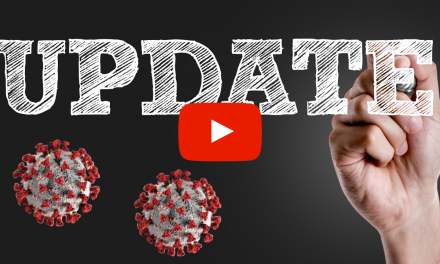
Estrogen Dominance

We all have females in our life including our patients, maybe a wife, significant other, aunt, sister, grandma or girlfriend. More than likely, they have complained of some hormonal disruption, at some point. The most common symptoms they may be suffering from include moodiness, lack of sex drive, irregular cycles, heavy bleeding, cramps, hot flashes, night sweats, weight gain, thyroid disorders, weight gain, foggy head, insomnia, and fatigue. Estrogen dominance is associated with infertility, blood clots, accelerated aging autoimmune disorders, and breast cancer.
Reasons for Symptoms
There are two primary reasons for these symptoms: lack of progesterone and/or high estrogen levels. Contrary to popular belief women are not running out of estrogen during peri-menopause. Until the last menses, estrogen levels don’t drop. After the last menses, the ovaries don’t stop making estrogen, it’s produced in smaller amounts. The adrenals are also involved in the production of estrogen and progesterone. The imbalance occurs because there is too much estrogen relative to the progesterone. Let’s look at the cycle, the root issues, and some solutions.
Let’s review the cycle. Day one is the first day of the menstrual cycle, the first day of bleeding. Estrogen starts to rise for about 5-7 days then falls for about 5-7 days. Ovulation occurs around day 12-14. Estrogen is responsible for laying down the lining in the uterus. Progesterone rises and falls over the next 15 days. As it falls menses begins. Problems occur when estrogen is not cleared from the system properly, not enough progesterone is made or too much estrogen is made particularly in the second half of the cycle. The root problem lies in the high-stress lifestyle of most women in the US, which leads to adrenal burnout and ovarian fatigue.
Stress comes in many forms for our patients. Chemical, physical and mental/emotional stress are handled the same way in the body, requiring the adrenals to produce adrenaline and cortisol. When those stressors continue, it is like having a tiger chasing the patient all day, every day. Over time, the adrenals cannot keep up, production of progesterone suffers. When progesterone decreases, the body has relative estrogen dominance.
External Sources of Estrogen
Xenobiotics are estrogen sources outside of the body. This includes plastic bottles, hormone replacement or birth control, animal protein raised with hormones, and some pesticides and fertilizers. These mimic and increase the relative effects of estrogen.
Low fiber and nutrient deficient diets lead directly to leaky gut and decreased liver function. Hormones that need to be processed by the gut and the liver. The organs cannot possibly function properly on a diet of refined and processed food, the Standard American Diet. It’s like expecting a gas engine to run on diesel. Fiber and short and medium chain fatty acids feed the flora of the gut to produce enzymes which conjugate estrogen, removing it from the body. The liver also needs specific nutrients and pH to perform detoxification of the xenobiotics.
When women have body fat percentage over 28% it increases the chances of estrogen dominance. Fat is an endocrine organ capable of storing xenobiotics. High insulin levels lead to more obesity and fat storage. High insulin levels are also responsible for aromatase enzymes converting DHEA from the ovaries and adrenals to estrone (E3), unhealthy estrogen. With 70% of the population overweight and obese, estrogen dominance will be seen increasingly in our offices.
Now with a better understanding of the cause of symptoms related to PMS, peri-menopause, and menopause, what are the solutions?
Solutions
- Lifestyle – A modified Mediterranean diet with plenty of vegetables and lean protein is the place to start. Don’t expect the patient to be perfect, reduction of refined foods and the introduction of leafy and colored vegetables will go a long way. Keeping the blood sugar even and sleeping a minimum of 6-7 hours per night supports proper adrenal function. Email me if you want specific a specific diet for your patients to follow.
- Exercise – 30 minutes 5 days per week of moderate to brisk walking reduces stress and helps tighten the pelvic floor.
- Adjust your patient’s spine.
- B-complex vitamins support the adrenals. Metagenics Glycogenics has been a solid supplement for years.
- adrenal from OrthoMolecular is a strong adrenal support product. It contains a glandular which makes it effective in giving these women the energy they need with 1-2 capsules in the morning.
- Chasteberry – This progesterone-like herbal will help regulate irregular cycles, improve insomnia associated with hormonal challenges and reduce moodiness and bloating associated with PMS the week before the menstrual cycle starts for many of your patients. Chasteberry Plus from Metagenics is my supplement of choice.
- Heavy bleeding and breast tenderness is often associated with excess estrogen which can be easily controlled by adding I3C – indole-3-carbinol and/or DIM – diindolylmethane. Both allow the body to efficiently convert 16-hydroxy-estrogen to 2-hydroxy-estrogen. The 2-OH-estrogen has antioxidant abilities and is shown to decrease breast cancer risk. A product that is also excellent at clearing excess estrogen, via beta-glucan, is a product called Immune by Orenda International.
- For hot flashes and vaginal dryness associated with menopause, there are several choices. Estrovera from Metagenics is very effective and usually only needs a small dose of one per day. Black Cohosh is another herbal that will help control some of these symptoms, but I have only had mixed results.
- A completely novel approach is to stimulate the pituitary and the hypothalamus. These are the master glands that control the thyroid, ovaries and adrenal glands. Otropin by Orenda International uses liposomal technology to allow the ingredients to pass the blood-brain barrier and gently awaken the pituitary hypothalamus endocrine axis. It works by increasing the body’s ability to make human growth hormone. This allows the body to function more efficiently. When you directly have an impact on the endocrine system from the nervous system side, you affect the system as a whole.
This will lead to normalization of cycles along with most of the other symptoms associated with PMS, peri-menopause, and menopause.
Conclusion
On the surface, this appears to be an easy issue to solve, try progesterone creme. For some patients, this may be the answer after failed attempts with these protocols. I have certainly used it with certain patients. However, this is chasing symptoms and in the long run, will not be the most effective answer for the patient. As chiropractors, there are many other avenues we can use before adding hormones to a patients’ protocol. When the systems are supported properly, symptoms begin to decrease in the first month. There is a delicate balance in the hormone system, and the body intelligence knows that balance.















